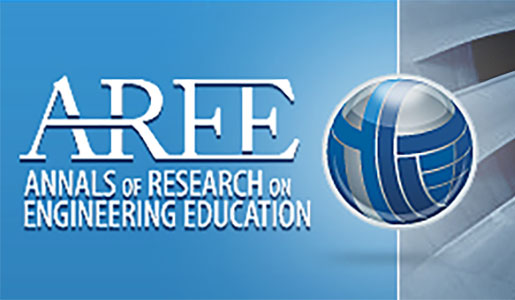Article: Experiential Learning Environments: Do They Prepare Our Students to be Self-Directed, Life-Long Learners?
For engineering professionals, the ability to stay abreast of conceptual and technical developments in one’s field and to deploy new knowledge in interdisciplinary contexts is increasingly essential. Universities in recent years have thus devoted considerable attention to developing educational programs to promote the self-directed learning (SDL) capacity necessary to prepare students for lifelong learning (LLL). Recent research, however, indicates traditional academic structures may not effectively promote SDL or LLL [1-3], and interest has grown in non-traditional, experiential approaches. This work investigated whether the Worcester Polytechnic Institute’s experiential Global Studies program, which engages students in semester-long, open-ended team projects executed in locations around the world, is an effective vehicle for developing SDL/LLL readiness.
To explore this question, we used a triangulated research methodology and obtained results using the following three instruments measuring complementary SDL-related attributes”>
The Self-Directed Learning Readiness Scale (SDLRS) [10], a leading SDL research instrument that asks students to rate themselves on a number of SDL-related attitudinal attributes (“I like to learn”) and preparedness (“I can learn things on my own better than most people”). We explored individual changes in SDL readiness by asking students (N = 108) to complete the SDLRS survey at the beginning and end of their Global Program experience. We found a small increase in average SDL growth, with women somewhat more likely to benefit than men. The results also raised concern that, as with other study abroad programs [15], for a few students the program might have worrisome negative effects on SDL readiness.
The IDEA system [11-13], a nationally recognized course evaluation system that we used midway through the project experience to explore three dimensions of SDL — research skills, critical thinking, and expression (written and oral). Students in Global Program courses (9 courses, 184 students) reported much stronger growth in these dimensions than did students in other courses that also put a high priority on one or more of these SDL-related learning objectives prior (~240 WPI courses and ~18,000 courses in the IDEA national database). SDL benefits thus measured were large and consistently reported by all Global Program cohorts analyzed.
The WPI internal final project report quality assessment protocol [14], through which an independent team of faculty reviewers found Global Program students consistently outperformed their on-campus project counterparts by very large margins in overall project quality and the three SDL-related dimensions noted above. Where the first two methods measured student self-reports of SDL-related attitudes and abilities growth, this method measured the extent to which neutral observers could see evidence of SDL-related abilities reflected in the project final report.
We concluded on the basis of these results that the WPI program shows strong potential for promoting SDL/LLL. We wondered, however, why the SDLRS showed only weak SDL development while the other two measures showed clear and strong development. Because SDL and LLL are complex psycho-social phenomena [4-9], and because our triangulated research strategy depended on three overlapping and complementary but not directly comparable methods, divergent findings might result from how the tests were administered, how SDL is operationalized in each, or both. We have anecdotal reason to hypothesize that the timing of our SDLRS post-test, which for logistical reasons needed to occur during the final stressful week of project completion, might have resulted in lower scores on SDL-related attitude indicators (“Learning is fun”) than might be expected following full completion of the project. We were not able to test this or other potential explanations, but believe future research employing interviews and other rich, qualitative methods are essential for exploring more deeply student SDL development and its relationship to particular educational programs.
A portion of this work (SDLRS part) was funded by a grant from the Educational Research and Methods Division of the American Society of Engineering Education, for which the authors are grateful.
References
[1] Litzinger, T., J. Wise, S-H. Lee, and S. Bjorklund, Assessing Readiness for Self-Directed Learning, Proceedings of the ASEE Annual Meeting, June 2003.
[2] Litzinger, T., S-H. Lee, and J. Wise, Engineering Students’ Readiness for Self-Directed Learning, Proceedings of the ASEE Annual Meeting, June 2004.
[3] Litzinger, T.A., J.C. Wise, and S. Lee, Self-directed Learning Readiness Among Engineering Undergraduate Students, Journal of Engineering Education, pp. 215-221, April 2005.
[4] Oliver, P. The concept of lifelong learning. In P. Oliver (ed), Universities and Continuing Education”>What is a Learning Society? Aldershot: Ashgate, 1999.
[5] Brockett, R G, and R. Hiemstra, Self-direction in Learning: Perspectives in Theory, Research, and Practice. Routledge, London, UK 1991.
[6] Candy, P., Self-Direction for Lifelong Learning”>A Comprehensive Guide to Theory and Practice. San Francisco: Jossey-Bass, 1991.
[7] Della-Dora, D., and L. Blanchard, eds., Moving Toward Self-Directed Learning: Highlights of Relevant Research and of Promising Practices, Alexandria VA: Association for Supervision and Curriculum Development., 1979.
[8] Besterfield-Sacre, M., et al., Defining the Outcomes”>A Framework for EC-2000, IEEE Trans. Educ. May, 2003.
[9] Mentkowski, M. and associates, Learning That Lasts, San Francisco: Jossey-Bass, 2000.
[10]Guglielmino and Associates, http://www.guglielmino734.com/, accessed 2/22/05.
[11] IDEA Center. http://www.idea.ksu.edu/StudentRatings/index.html, accessed August 1, 2005.
[12]Hoyt, D. P. and E. Lee. IDEA Technical Report No. 12, Basic Data for the Revised IDEA System. The Individual Development and Educational Assessment Center, August 2002.
[13] Hoyt, D. P. and S. Perera. Validity of the IDEA Student Ratings of Instruction System”>An Update. IDEA Research Report #2. The Individual Development and Educational Assessment Center, November 2000.
[14] DiBiasio, D. and N. Mello, Multilevel Assessment of Program Outcomes: Assessing a Nontraditional Study Abroad Program in the Engineering Disciplines, 10 pp. 237-252, Frontiers: The Interdisciplinary Journal of Study Abroad Fall, 2004.
[15] Juhasz, M. and A.M. Walker, The Impact of Study Abroad on University Students’ Self-Esteem and Self-Efficacy, College Student Journal 22 329-41,Winter 1988.
Author 1″>Scott Jiusto [email protected]
Author 2: David DiBasio [email protected]
Article Link: www.asee.org

